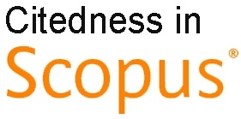Author Guidelines
General Requirements
- Manuscripts submitted to Shirkah: Journal of Economics and Business should be a research paper or a review paper which have not been published or are under consideration elsewhere.
- Manuscripts must be in English. It should be typed in MS Word doc. format; using 12-pt Palatino Linotype; left, right, top, and bottom margins are 2,2 cm; 1,15-spaced on A4-sized paper; 4500-7500 words.
- The manuscript will be reviewed by subject reviewers, while the editors reserve the right to edit the manuscript for format consistency without altering the substance.
- Make sure that the manuscript is prepared using the Article Template.
- The manuscript must be sent through SHIRKAH website (OJS). For confirmation, the Cover Letter & Statement of Originality must be emailed to the Journal Editor (shirkahiainsurakarta@gmail.com)
- The citations and references should follow the style of the American Psychological Association (APA) 6th Edition and use Reference Management Software.
- The manuscript must be checked in terms of grammar, structure, spelling, etc. It is suggested to use Grammar Checker Software Grammarly (http://app.grammarly.com).
Types of Paper
Shirkah: Journal of Economics and Business receives manuscripts in an original research paper and review paper.
- Original research paper, which is an article that reports detailed research and classified as primary literature. Its format includes an introduction and background problems, review of literature and hypotheses development, research method, results, interpretations of findings, discussion, and conclusion. The length of the paper is generally between 4500-7500 words. Example of research paper: Performance of GoFood MSEs Partnership: An Integration of Entrepreneurial Orientation, Marketing Capabilities, and Brand Orientation
- A review paper, which is an article that provides up-to-date reports and discussions on the current issues of economics and business. It discusses previous development from the topic and gives an overview of the future. Its format includes an introduction and followed by necessary subsections. In general, a review paper usually consists of 3000-6000 words, depending on the case being reviewed. Example of review paper: A Critical Review of the Market Efficiency Concept
General Structure of Original Research
Paper Identity
The paper title must be concise and informative. It should be pinpoint with the issue discussed and should not exceed 15 words. The title is followed by the authors' names, affiliations, and email. The names of authors should be written without any academic title.
Abstract
The abstract should be clear and informative, and is created in a single paragraph. The abstract should succinctly describe your entire paper. It begins with the research gap, and followed by the purpose of the research, methodology, main results, and contribution of the findings. The abstract should stand alone, which means that no citation or no references in the abstract. The abstract should tell the prospective reader what the author did and highlight the key findings. Avoid using technical jargon and uncommon abbreviations. Following the abstract, 3-5 keywords that are well selected and closely related to the research topic must be provided.
Introduction
The introduction of a research paper should clearly state the purpose of the paper. It includes key references to appropriate work. It states the significant contribution of the research. The introduction should consist of the background of the study, research contexts, research gaps, and research objectives (at the end of the introduction). The introduction should show the scientific merit or novelty of the paper. All introductions should be presented in the forms of paragraphs, not pointers, and with the proportion of 15-20% of the whole article length. Inroduction should also represents the theoretical core of the research article. It includes a review of related literature in essay style. The purpose of a literature review is to “look again” (re+view) at what previous researchers have done regarding to the topics of the article. Thus, in the literature review, the researchers should critically evaluates, re-organizes and synthesizes the work of previous researchers, then followed by the formulation of hypotheses (if any). This section shows the roadmap of your research. It is then followed by stating explicitly the uniqueness or distinction of your paper compared to the previous studies.
Method
The method section consists of a description concerning the research design, sample selection and data sources, research instruments, data collection, and data analysis (variable measurement) with the proportion of 10-15% of the total article length, all presented in the form of paragraphs.
Results
The results obtained from the research have to be supported by sufficient data. The research results and the discovery must be the answers of the research questions and/or hypotheses stated previously in the review of literature part. The results section consists of a description of the results of the data analysis to answer the research question(s). The results should summarize (scientific) findings. It usually contains data presented in the form of tables, interview responses, and figures (see the Article Template for detail description of how to present tables, interview responses, figures, and graphs)
Discussion
Every author has a different style in writing discussion section. In general, the discussion should explore the significance of the results of the work, not repeating them. In the discussion, it is the most important section of your article. Here you get the chance to sell your data. Make the discussion corresponding to the results, but do not reiterate the results. Often should begin with a brief summary of the main scientific findings. The meanings of the findings should be shown from current theories and references of the area addressed. The following components should be covered in discussion: How do your results relate to the original question or hypothesis outlined in the Introduction/review of literature section (what)? Do you provide interpretation scientifically for each of your results or findings presented (why)? Are your results consistent with what other investigators have reported (what else)? Or are there any differences? (The proportion of the Results and the Discussion sections is 40-60% of the total article length).
Conclusion
The conclusion section consists of the summary, restatement of the main findings. It should state concisely the most important propositions of the paper as well as the author’s views of the practical implications of the result. Tell how your work advances the field from the present state of knowledge. Without a clear conclusion, reviewers and readers will find it difficult to judge the work, and whether or not it merits publication in the journal. Do not repeat the Abstract, or just list experimental results. Provide a clear scientific justification for your work, and indicate possible applications and extensions. You can also suggest future research and point out those that are underway. Write only one or two paragraphs for the Conclusion.
Author Declaration
This section contains a statement of funding sources for the research work. This section also contains gratitude to those who contributed to the research and preparation of the manuscripts.
References
This section lists all the references cited in the text. Shirkah: Journal of Economics and Business using APA style. The references should be more up-to-date (published in the last 5-10 years). The primary sources cited in your paper are in the forms of journal articles, proceedings, research reports including theses and dissertations that can be accessed online (show the DOI address/URL). Citations from online journal articles should be at least 80% of the total references cited. Citation and reference systems must use the Reference Management System such as Mendeley, EndNote, Zotero.
Appendix (if any)
General Structure of Review Paper
Paper Identity
The paper title must be concise and informative. It should be pinpoint with the issue discussed and should not exceed 15 words. The title is followed by the authors' names, affiliation, and email. The names of authors should be written without any academic title.
Abstract
The abstract should be clear and informative, and is created in a single paragraph. The abstract should succinctly describe your entire paper. It explains the background of the issue, the purpose of the paper, and the key points of issue discussion. Following the abstract, 3-5 keywords that are well selected and closely related to the research topic must be provided.
Introduction
The introduction of research paper should clearly state the purpose of the paper. It includes key references to appropriate work. It states the significant contribution of the research. The introduction of a review paper generally contains background and context of the issue being discussed, current trends of the problem studied, and justification of the authors' reasons for reviewing the literature.
Necessary Subthemes/subsections
Following introduction, necessary sub-themes or sections can be added, depending on the topic of the paper being discussed.
Conclusion
The conclusions in the review article differ slightly from the conclusions of the original research paper. The conclusions generally contain the implications of the findings, the interpretation by the authors, and the identification of unresolved recital questions.
Author Declaration
This section contains a statement of funding sources for the research work. This section also contains gratitude to those who contributed to the research and preparation of the manuscripts.
References
This section lists all the references cited in the text. Shirkah: Journal of Economics and Business using APA style. The references should be more up-to-date (published in the last 5-10 years). The primary sources cited in your paper are in the forms of journal articles, proceedings, research reports including theses and dissertations that can be accessed online (show the DOI address/URL). Citations from online journal articles should be at least 80% of the total references cited. Citation and reference systems must use the Reference Management System such as Mendeley, EndNote, Zotero.
Manuscript/Paper Template
Manuscript/paper template of research paper: Article Template
Manuscript/paper template of review article: Article Template
Language (Usage & Editing Services)
Please write your text in good English (American or British usage is accepted, but not a mixture of these). Authors who feel their English language manuscript may require editing to eliminate possible grammatical or spelling errors and to conform to correct scientific English may wish to use the English Language Editing service. Authors may use the proofreading services in their own or if they want to use the journal's services, then they have to pay IDR150 per word.
Table & Figure
- Please submit tables as editable text and not as images.
- Tables or figures can be placed either before or after the relevant text in the article.
- Number tables consecutively in accordance with their appearance in the text and place any table notes below the table body.
- Be sparing in the use of tables and ensure that the data presented in them do not duplicate results described elsewhere in the article.
- Please avoid using vertical rules and shading in table cells.
- Tables should always be cited in text in consecutive numerical order.
- Examples of using tables and figures, available in full in manuscript/paper template.
References
Shirkah: Journal of Economics and Business using APA style. Citation and reference systems must use the Reference Management System such as Mendeley, EndNote, Zotero.



